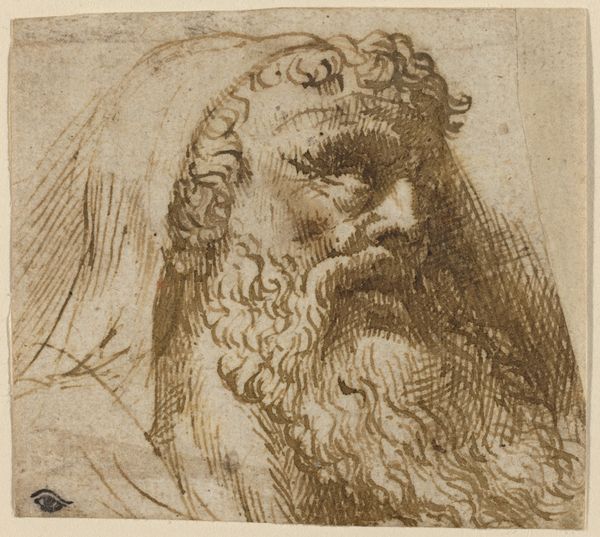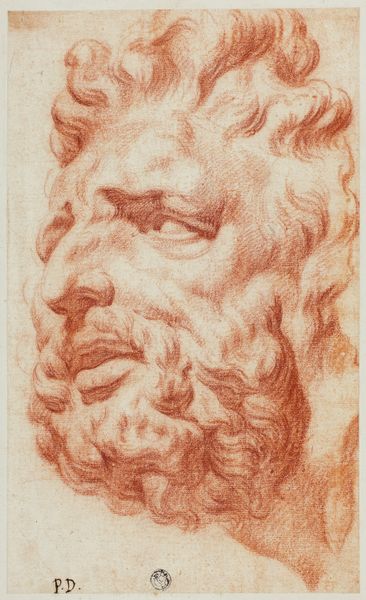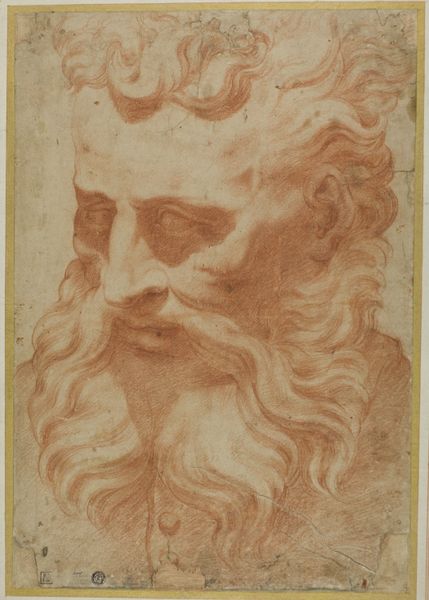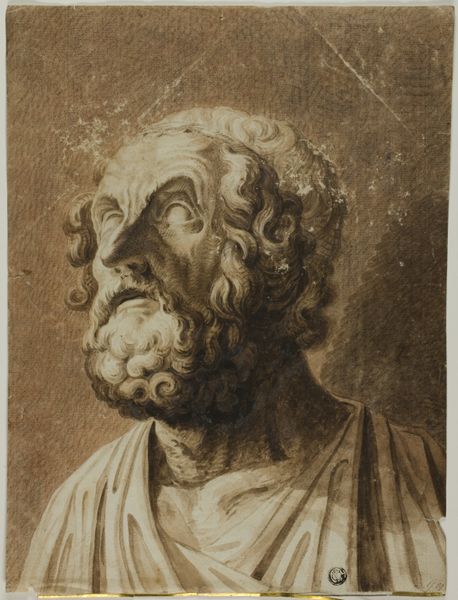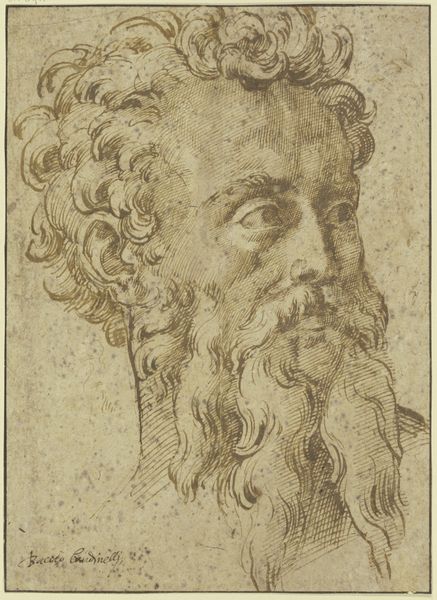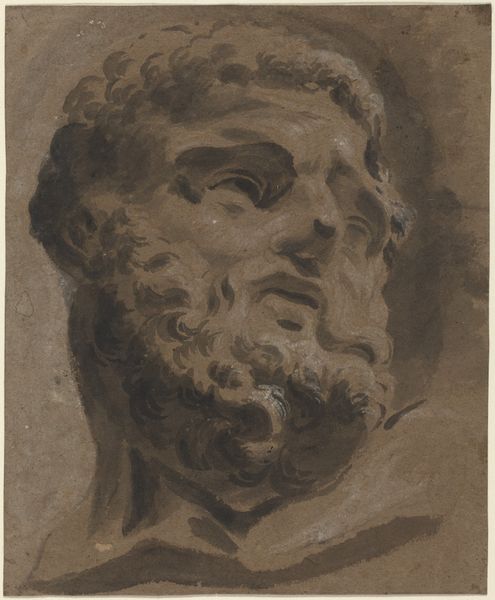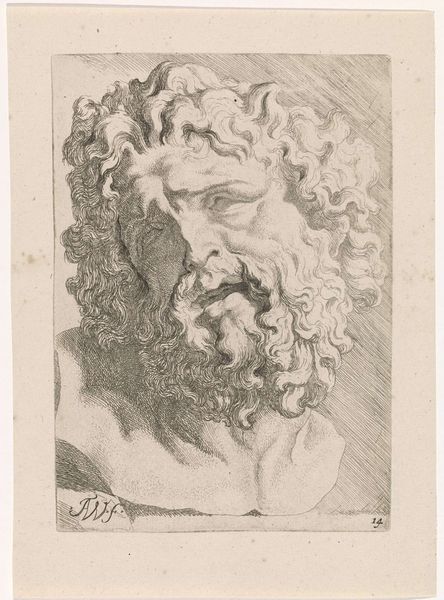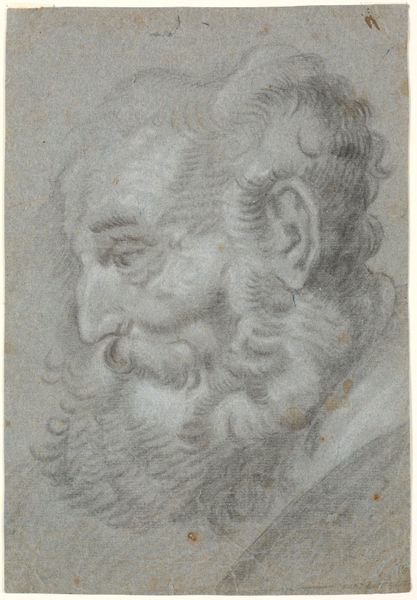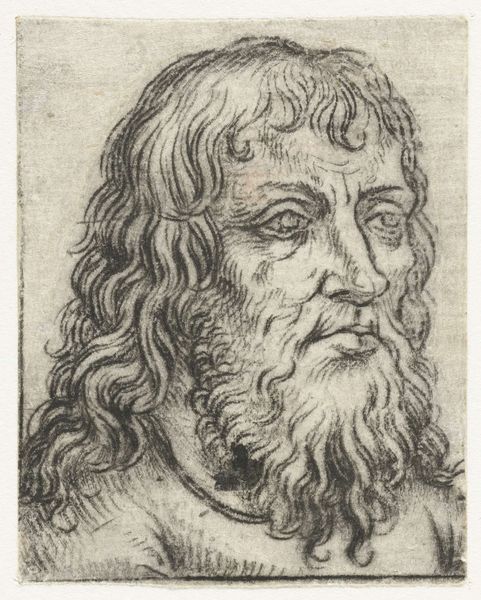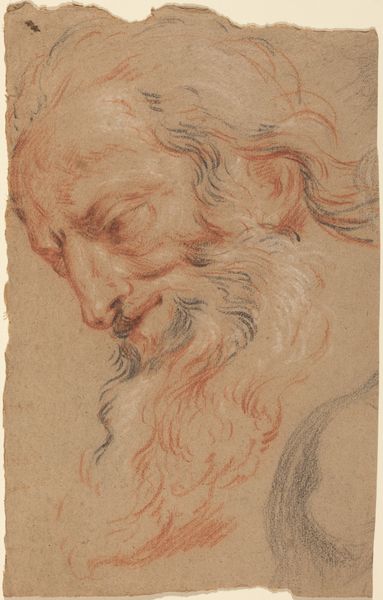
drawing, charcoal
#
portrait
#
drawing
#
charcoal drawing
#
11_renaissance
#
portrait drawing
#
charcoal
Dimensions: Overall (approximate): 11.3 x 8.2 cm (4 7/16 x 3 1/4 in.) support: 23.3 x 21.2 cm (9 3/16 x 8 3/8 in.)
Copyright: National Gallery of Art: CC0 1.0
Curator: Before us, we have a drawing entitled "Head of a Man" attributed to Domenico Campagnola. It appears to be executed in charcoal. Editor: My immediate sense is one of introspection. The figure’s eyes are downcast, almost closed. There's a heaviness, a contemplative stillness in his posture and the dense hatching emphasizes this mood. Curator: Domenico Campagnola was a painter and printmaker in Venice during the Renaissance. His works reflected the humanism popular during the Renaissance that emphasized man’s value. The identity of this particular man has been lost, but the detail hints to a prominent male figure of this time period. Editor: Indeed, and in our era, thinking about the canon, it is interesting how it so easily esteems prominent men and whose faces, voices, contributions, get centered and preserved by history and the museums. The closed eyes on this Renaissance face make me question who gets to see, and who is not visible? Whose gazes are valued? Curator: That’s a compelling point, especially when contextualized within Campagnola’s social sphere and the historical weight afforded to certain portraits over others. The politics of representation were certainly at play even then, influencing not just the selection of subjects, but also how they were portrayed. Editor: Absolutely. Considering how much of artistic practice historically reinforced patriarchal structures of the time, pieces like this invite questions. Is the man burdened by a public role he inhabits, for instance? Is there pressure from such expectation? We can almost trace a tension in the soft strokes that outline such serious tone. It becomes interesting to consider which feelings get deemed valuable, even. Curator: It’s fascinating to consider how the simple use of charcoal can express such profound notions. Seeing it displayed allows us a continued space to rethink power dynamics inscribed in artistic canons of the time. Editor: Definitely, seeing the charcoal and simple paper lets you imagine him on display in 15th-16th century Venice. The act of looking and acknowledging whose voices we've centered in art becomes as essential as the artistic gesture of Domenico Campagnola's "Head of a Man."
Comments
No comments
Be the first to comment and join the conversation on the ultimate creative platform.
